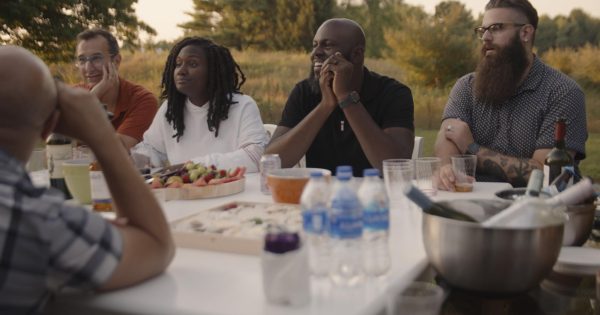‘Ready Player One’ review: Nostalgia isn’t a bad thing
I’ve seen a lot of hate towards Steven Spielberg’s newest film, “Ready Player One,” in the last week. “It’s nothing more than a bunch of forced references” and “It’s just fan service! There’s no story here!” are some of the more common complaints you’ll come across.
Maybe there’s an argument to be made in that. There’s also an argument on the other side of that spectrum as well — which is the side I find myself falling on.
First, some clarification. “Ready Player One” is based on a novel written by Ernest Cline and released in 2011.
The story centers around the character of Wade Watts (Tye Sheridan). The year is 2045 and the world has completely fallen apart. Climate change, energy crises and pollution have made the planet practically uninhabitable. The only places where most people can afford to live now are in “the stacks,” which are basically nothing more than a bunch of crammed mobile homes piled on top of each other.
Watts lives in one of these slums with his aunt and uncle in Columbus, Ohio. His life, to put it simply, isn’t great. Their family doesn’t have much money and his uncle is somewhat of an abusive brute.
There is, however, the OASIS — a virtual reality world created by the late James Halliday (Mark Rylance). The OASIS is a place designed to give people an area to escape: you can do just about anything or be anyone that you want in it, since players have the opportunity to design their own custom avatar. That means you can go surfing alongside Batman or wage a war on an alien race with Laura Croft at your side.
While adventures like these are fun and all, Watts — or, as he’s known as inside this world, Parzival — has a deeper reason for being here. He wants to one day rule the OASIS.
See, Halliday unexpectedly died five years ago, but right before his passing he made an announcement. Halliday had been working on a special quest inside the OASIS (think Anthony Hopkins in “Westworld”). Whoever wins it will be crowned king over the entire OASIS. All it takes to win is for a player to find the three separate Easter eggs, hidden somewhere in Halliday’s world.
The only problem is that no one has been able to find a single one of the eggs since Halliday’s death.
To make matters worse, Watts and the other “gunthers” (those who have dedicated their entire lives to Halliday’s quest) are racing a separate group of people known as “sixers.” These are nothing more than a bunch of corporate bought entities that are run by CEO Nolan Sorrento (Ben Mendelsohn), who wants to use the OASIS to sell ads.
It’s all a great deal of excitement, as we see pop-culture characters from different properties collide together on the screen for the very first time (don’t ask me how they got the rights to all this stuff; it must have been a nightmare).
That’s also where the problems start to arise, as people are calling Spielberg out for basing his film entirely around fan service.
In that, there’s no use in pretending this movie is perfect. The female protagonist, Art3mis (Olivia Cooke), isn’t written in all that satisfying of a way, and the way Spielberg chooses to end is problematic at best.
However, there are also moments that I, personally, loved about this movie — and not just because I understood what they were referencing.
Spielberg is a certain kind of storyteller who knows how to create stories we’re invested in, even when we shouldn’t necessarily be. Yes, some of the story beats in “Ready Player One” are things we’ve seen before, but he finds a way to inject new life into them.
Much of that comes from the characters and the mystery they’re surrounded in. Throughout the whole thing we’re learning more about James Halliday, how the OASIS consumed his life and some regrets he might have. Seeing this, we quickly realize Watts is heading down a similar path — which Art3mis later calls him out for. Spielberg cleverly unfolds all this with a wink of his eye, including an underlying commentary about things like net neutrality and studio conglomerations.
“This movie is going to show why it’s interesting not living in the real world, but what we’re missing by not,” Spielberg said in an interview.
Of course, that can be easy to miss and requires the viewer to dive into the movie’s subtext, but that doesn’t mean it’s not there.
“Ready Player One” also isn’t fan service just for the sake of being fan service. The references themselves all fit into the context of the story — the best of which is in the very middle of the film. While it’s fun to spot them, you can also watch “Ready Player One” without having seen a single one of the properties the film calls out and still have a perfectly enjoyable time.
So yes, “Ready Player One” isn’t as important as something like “Black Panther” and does cater ‘80s nostalgia more often than not. Is that necessarily such a bad thing, though? Aren’t the new “Star Wars” movies doing, like, exactly the same thing? And, if we’re being honest, Spielberg has far more relevant things to say in “Ready Player One” than Gareth Edwards did in “Rogue One.”






